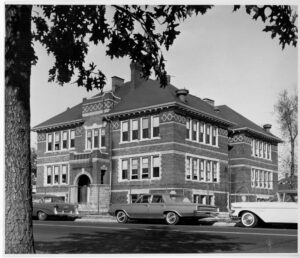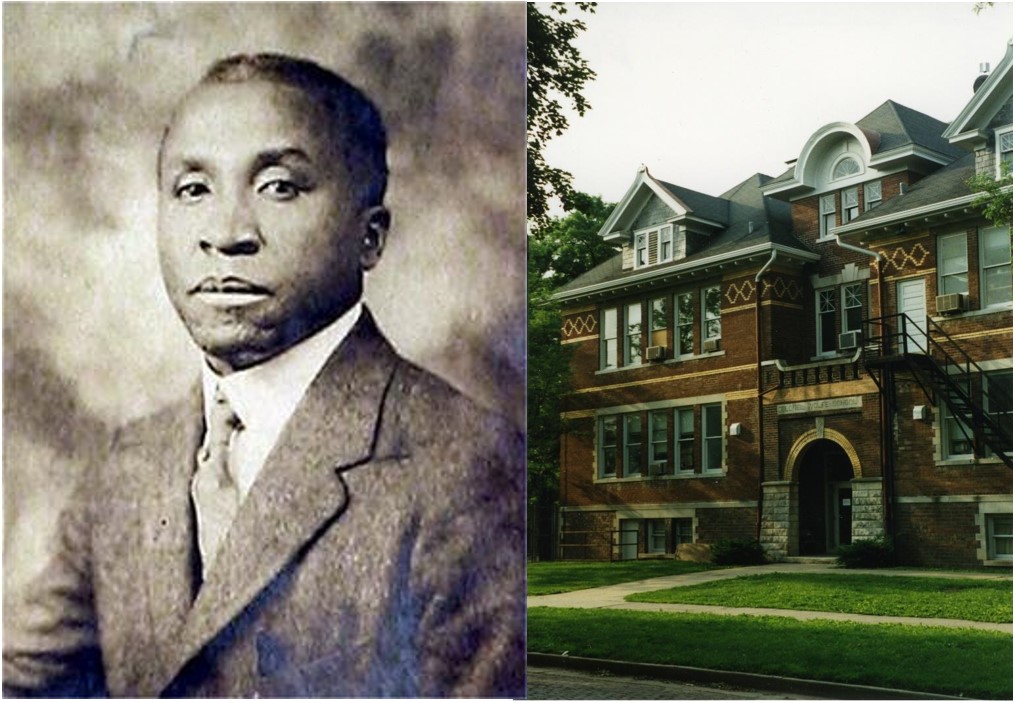Walter T. Bailey and the Colonel Wolfe School
403 E. Healey St., Champaign, IL
Walter Thomas Bailey was the first African American to graduate with a degree in architectural engineering from the University of Illinois in 1904, and he was the first licensed African American architect in Illinois. He contributed to the Colonel Wolfe School in Champaign as a young man, and later enjoyed a successful and influential career leading architectural projects throughout the United States. Bailey assisted with the design of the Colonel Wolfe School at 403 E. Healey in Champaign. The Colonel Wolfe School was constructed in 1905 as a public elementary school. Named after Colonel John S. Wolfe, captain of the 20th Regiment of Illinois Volunteer Infantry during the Civil War, the building was designed by the architectural firm Spencer & Temple from Champaign.
Bailey’s success as an architect continued throughout his life. After graduation, but before his work on the Colonel Wolfe School, Bailey worked for a small architectural firm owned by Harry Eckland in his hometown of Kewanee. Later, he oversaw the design and construction of many important buildings for African Americans, including churches, campus buildings at the Tuskegee Institute in Alabama, the Mosaic State Temple Building in Arkansas, and the Pythian National Temple in Chicago—one of the most significant African American architectural projects of its time.

The Colonel Wolfe School in the 1960s. Image courtesy of the Champaign County Historical Archives at the Urbana Free Library.
Sources:
Preservation and Conservation Association: http://pacacc.org/wp-content/uploads/2019/01/Summer-2018.pdf
University of Illinois: https://faa.illinois.edu/walter-t-bailey
Decade:
1900-1909
People:
- Walter T. Bailey
Location(s):
- Champaign, Illinois
Additional Champaign Trail Sites

